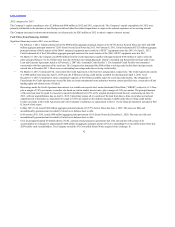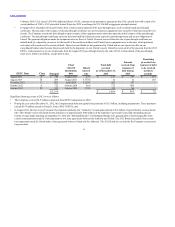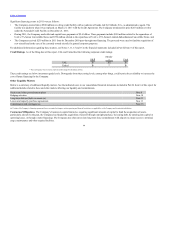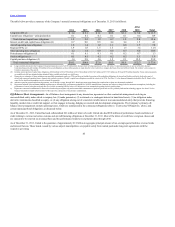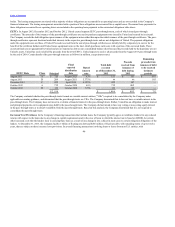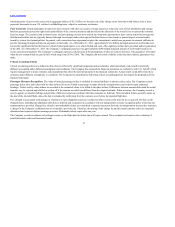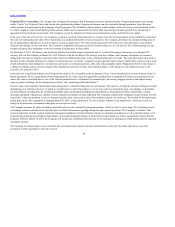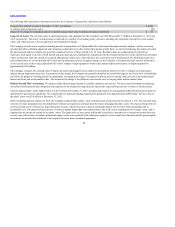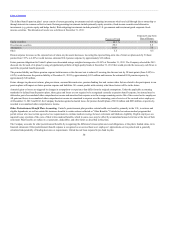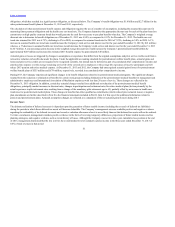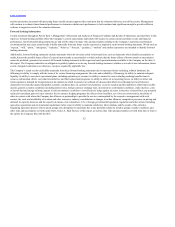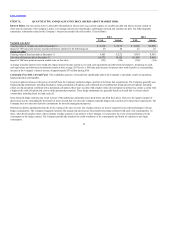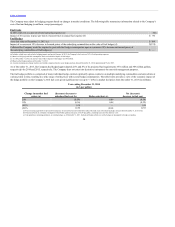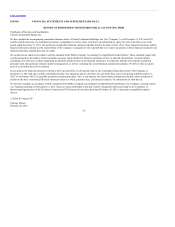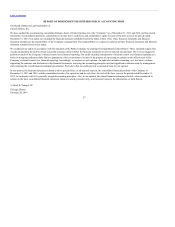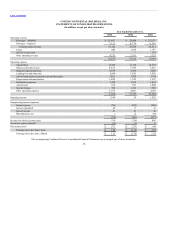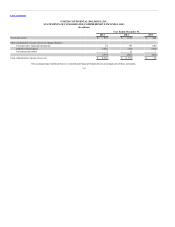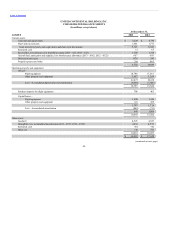United Airlines 2013 Annual Report Download - page 50
Download and view the complete annual report
Please find page 50 of the 2013 United Airlines annual report below. You can navigate through the pages in the report by either clicking on the pages listed below, or by using the keyword search tool below to find specific information within the annual report.
Table of Contents
The defined benefit pension plans’ assets consist of return generating investments and risk mitigating investments which are held through direct ownership or
through interests in common collective trusts. Return generating investments include primarily equity securities, fixed-income securities and alternative
investments (e.g. private equity and hedge funds). Risk mitigating investments include primarily U.S. government and investment grade corporate fixed-
income securities. The allocation of assets was as follows at December 31, 2013:
Percent of Total
Expected Long-Term
Rate of Return
Equity securities 48.3 % 9.5 %
Fixed-income securities 29.3 5.5
Alternatives 16.9 7.5
Other 5.5 4.5
Pension expense increases as the expected rate of return on plan assets decreases. Lowering the expected long-term rate of return on plan assets by 50 basis
points (from 7.33% to 6.83%) would increase estimated 2014 pension expense by approximately $12 million.
Future pension obligations for United’s plans were discounted using a weighted average rate of 5.09% at December 31, 2013. The Company selected the 2013
discount rate for each of its plans by using a hypothetical portfolio of high quality bonds at December 31, 2013 that would provide the necessary cash flows to
match the projected benefit payments.
The pension liability and future pension expense both increase as the discount rate is reduced. Lowering the discount rate by 50 basis points (from 5.09% to
4.59%) would increase the pension liability at December 31, 2013 by approximately $411 million and increase the estimated 2014 pension expense by
approximately $49 million.
Future changes in plan asset returns, plan provisions, assumed discount rates, pension funding law and various other factors related to the participants in our
pension plans will impact our future pension expense and liabilities. We cannot predict with certainty what these factors will be in the future.
Actuarial gains or losses are triggered by changes in assumptions or experience that differ from the original assumptions. Under the applicable accounting
standards for defined benefit pension plans, those gains and losses are not required to be recognized currently as pension benefit expense, but instead may be
deferred as part of accumulated other comprehensive income and amortized into expense over the average remaining service life of the covered active employees.
All gains and losses in accumulated other comprehensive income are amortized to expense over the remaining years of service of the covered active employees.
At December 31, 2013 and 2012, the Company had unrecognized actuarial losses for pension benefit plans of $162 million and $826 million, respectively,
recorded in accumulated other comprehensive income.
Other Postretirement Benefit Plan Accounting. United’s postretirement plan provides certain health care benefits, primarily in the U.S., to retirees and
eligible dependents, as well as certain life insurance benefits to certain retirees reflected as “Other Benefits.” United also has retiree medical programs that
permit retirees who meet certain age and service requirements to continue medical coverage between retirement and Medicare eligibility. Eligible employees are
required to pay a portion of the costs of their retiree medical benefits, which in some cases may be offset by accumulated unused sick time at the time of their
retirement. Plan benefits are subject to co-payments, deductibles, and other limits as described in the plans.
The Company accounts for other postretirement benefits by recognizing the difference between plan assets and obligations, or the plan’s funded status, in its
financial statements. Other postretirement benefit expense is recognized on an accrual basis over employees’ approximate service periods and is generally
calculated independently of funding decisions or requirements. United has not been required to pre-fund its plan
50




